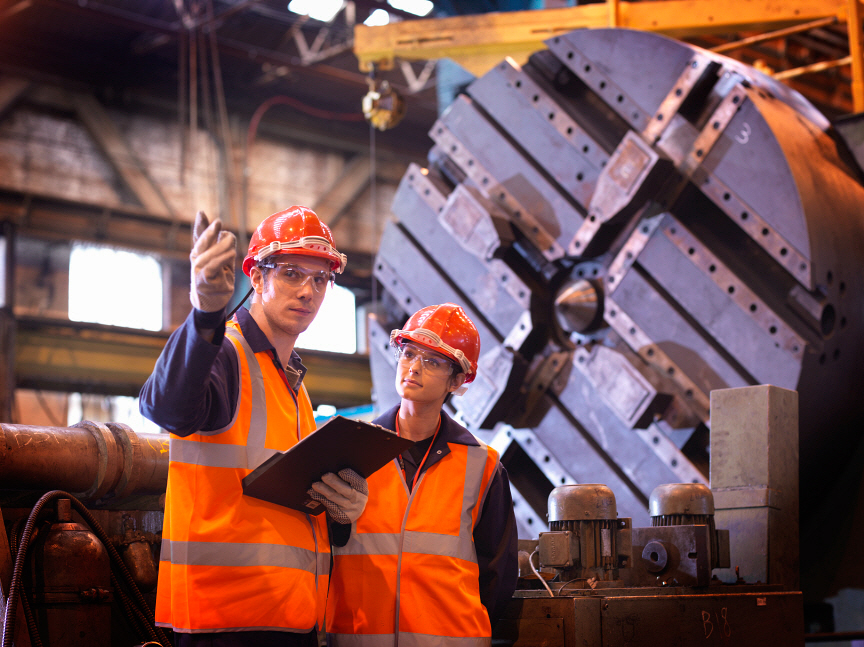As in most other industries, consumer demand for faster, better and more personalized products with higher and better efficiencies is driving manufacturers to address redundancies in their processes. The world of manufacturing is adopting manufacturing management software and moving towards more nimble operations, faster shipping and smaller runs on the shop floor via a higher level of automation.
Even as terminologies such as Industry 4.0 and Smart Manufacturing[1]find their place in common parlance, several leading companies in the space are tweaking their operational models and strategies to become more tech-driven and increase their efficiencies and profits. Approximately 55% of the global manufacturing organizations have already transitioned, in some percentage, to become more technology-focused[2]. They are looking at increased visibility, better productivity, better safety, increased customization[3], seamless predictive maintenance capabilities, improved customer engagement, faster supply chains and interoperable systems that are automated as the main benefits[4]. This may lead them into looking into ERP solutions for manufacturing.
The Industry 4.0, in particular, is being looked upon as the fourth major industrial revolution, one that is accelerating the adoption of computers and automation, fuelled by several new emerging technologies. The goal is to refine complicated processes and expedite them; to manage supply chains; and to ultimately streamline the digital communication between machines to the point that human involvement becomes negligible.
Current manufacturing setups are now headed toward cyber-physical systems and advanced human and machine interaction to reap the best possible benefits. Take as case in point the merging of Internet of Things (IoT with Artificial Intelligence (AI), that is making predictive maintenance possible (minimizes machine downtime, paving way better control on processes and systems), making production on demand a reality. The application of AI-based technologies has shown that an additional US$3.8 trillion in Gross Value Added (GVA) can be created by 2035[5].
When the topic is on AI, can robotics be far behind? The world saw its first industrial robot, Ultimate, in the 1950s. Since then, with industrial automation itself undergoing a radical shift, these robots have become more task-agnostic, unlike their predecessors, and more quickly deployable[6]. The current day exoskeletons[7] are proof that they have become exceedingly collaborative as they augment human capabilities, working alongside rather than replacing people. With several more tabletop and mobile robotic platforms being invested in, even the small and mid-sized businesses are able to bring in a higher level of automation than before in a bid to stay competitive.
With so many new technologies (like manufacturing management software) changing the playing field, it is essential to have a good handle on all the data being generated. Managing and analysing data allows management to gain real-time insights from disparate sources, offering a comprehensive understanding of different processes. When combined with the power of cloud computing, which enables the storage of data, and leveraging IoT, manufacturers are able to create a highly comprehensive communications system between manufacturing devices and networks, which enables machines to adjust processes based on any inputs coming in from external devices.
Industrial 3D printers such as HPs Metal Jet 3D print metal components in fabrication setups help bring fast and advanced manufacturing to the masses at less time and material than is now required even to produce/re-produce a complex design[8].
Using immersive Virtual Reality (VR) and Augmented Reality (AR) to increase multi-user visualization and interaction, manufacturers are enhancing their factory planning processes during production designing[9]. As VR software can talk to computer-aided designs, it is leveraged to make any modifications right at the designing stage. AR devices provide factory workers with real-time insights into the production process.
As the world moves closer to an on-demand model of consumption, leaner processes requiring less energy, material and time are coming into focus. However, it is clear that the role of automation and manufacturing management software does not stop there. The goal is to move to a point where humans and machines interact seamlessly and open several more doors with a collaborative approach at the forefront.
[1]https://www.i-scoop.eu/manufacturing-industry/
[2]https://www.forbes.com/sites/bernardmarr/2018/09/02/what-is-industry-4-0-heres-a-super-easy-explanation-for-anyone/#1bcbadc9788a
[3]http://ignition.altran.com/en/article/impacts-digital-technologies-industry-future/
[4]https://www.manufacturingglobal.com/technology/how-technology-transforming-manufacturing
[5]https://www.accenture.com/_acnmedia/pdf-84/accenture-ai-industry-growth-full-report.pdf
[6]https://www.zdnet.com/article/robotics-adoption-the-smb-guide-to-industrial-automation/
[7]https://www.machinedesign.com/motion-control/manufacturing-workers-become-more-human-exoskeletons








